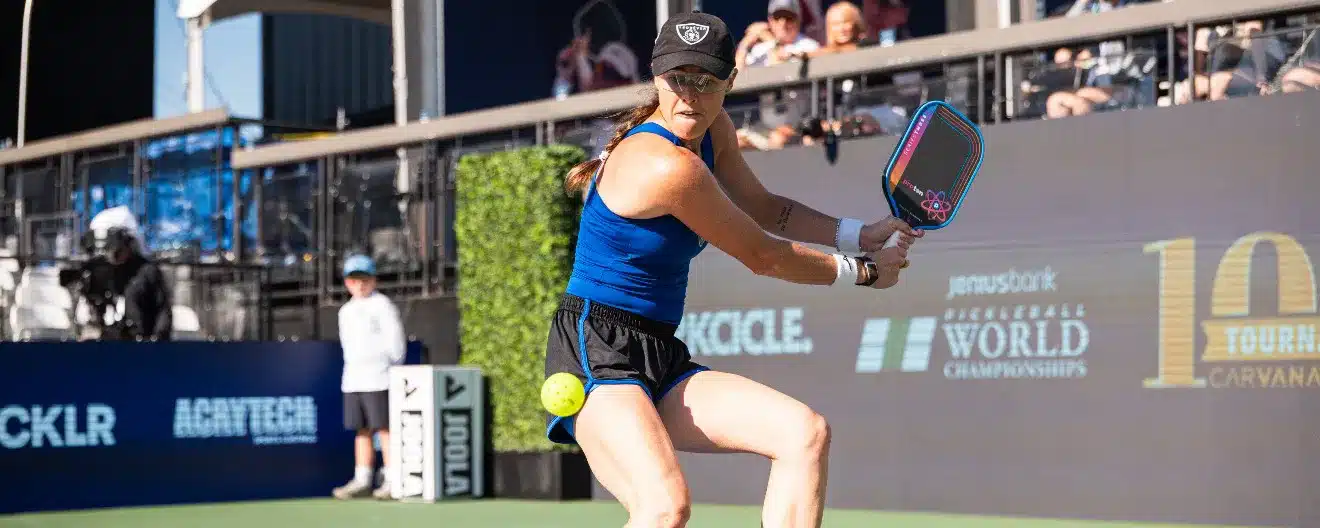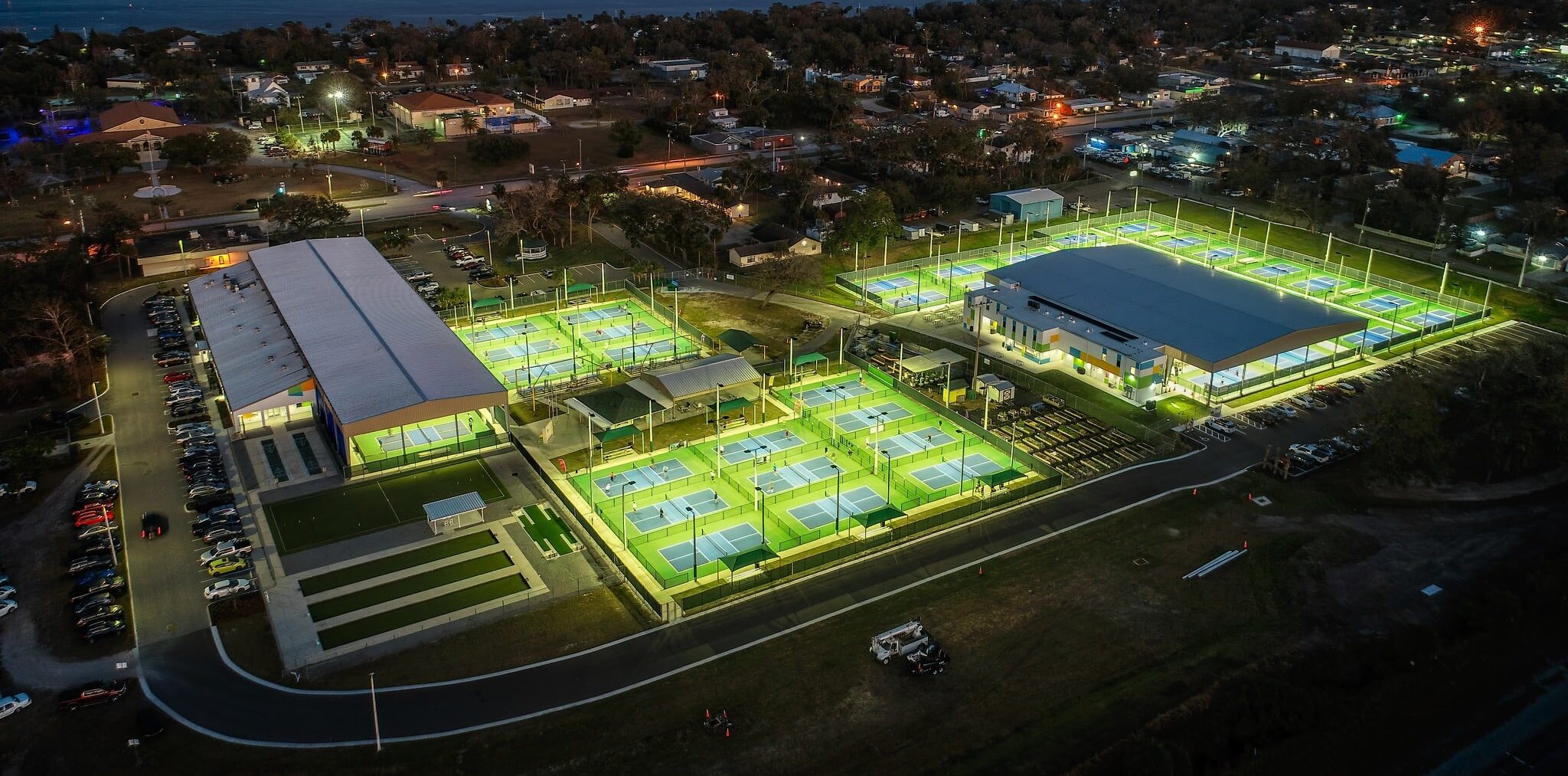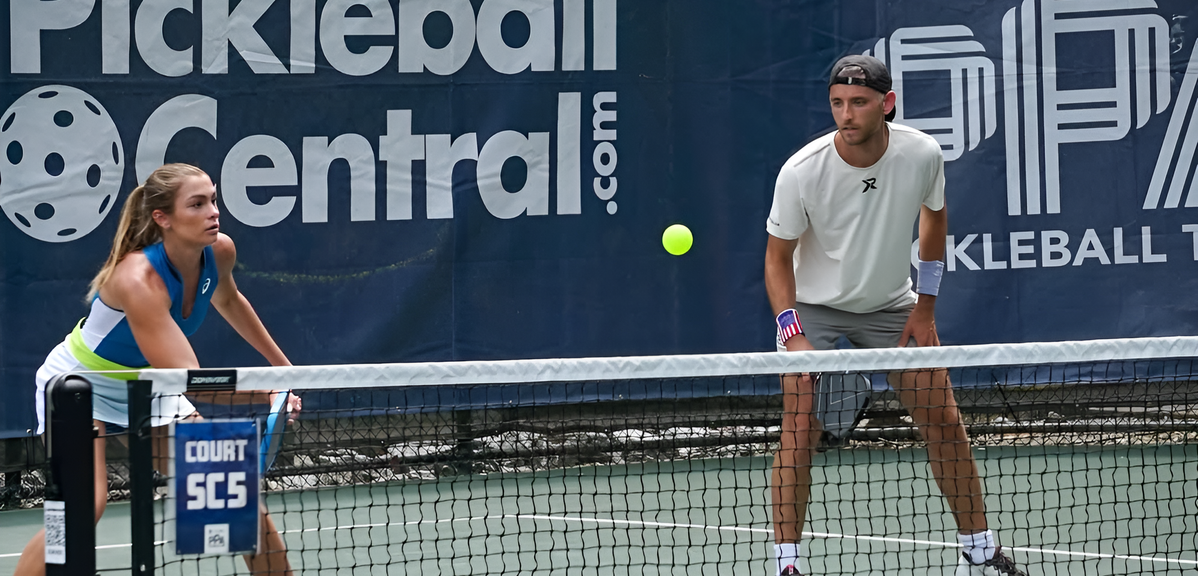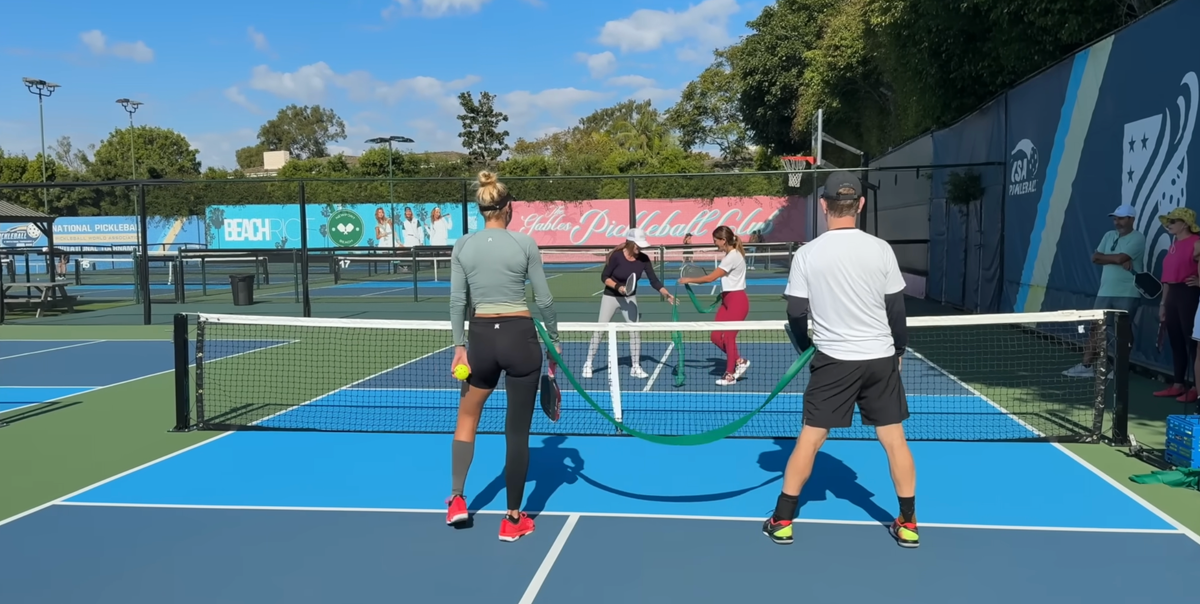The rules, strategies and everything else about this fast-moving sport that’s here to stay.
Major League Pickleball will be the first major American professional sports league to implement a promotion and relegation system. The draft for the first season—featuring some of the world's best pickleball players and most famous celebrities—will take place in Las Vegas tonight, Thursday, December 15th, and air on Tennis Channel at 9:00 p.m. EST.
Equipment & Setup
Pickleball is played on a hard court as either doubles or singles. The court is 20’ x 44’—the same size for both singles and doubles—and features three quadrants on either side of the net, similar to a tennis court. But unlike in tennis, the quadrants are swapped, putting the service boxes at either end of the court, rather than directly in front of the net.
The open area within seven feet of the net on both sides is referred to as the “non-volley zone” (NVZ) or more colloquially, the “kitchen.” The two squares in the back of the court on either side are the left and right service boxes.
The pickleball is a hard plastic ball with holes in it, similar to a wiffleball. Paddle composition can vary widely, but is generally constructed of plastic or other synthetic materials.
It may look like a wiffle ball, but a pickleball has round holes—about 26 to 40, depending on the model—as opposed to long slots, and spins less.
Serve & Return
To begin, the ball is served from just outside the right service box into the service box diagonal from it on the opposite side of the court. The serve must be hit underhand, and contact with the ball must be made below the waist. A ball that lands on any of the lines is “in,” with the exception of the kitchen line while serving. If a serve lands on the kitchen line, it is “out” because this line is considered part of the kitchen, not just a dividing line between quadrants.
When a team gains possession of serve in doubles, the ball is always served from the right side of the court. In singles, however, upon gaining possession, the server starts on the right side when his score is even, and on the left side when his score is odd. Servers only have one chance to land their serve in the correct area, and lose serve if they fail to do so.
Balls may be either hit after a single bounce or volleyed out of the air. There is a exception, though: the serve and the return must both bounce once before players are able to attempt volleys. This keeps the serving team back in the court and neutralizes the server’s advantage.
Non-Volley Zone
In both doubles and singles, players try to work their way up to the net and control the point from just outside the non-volley zone—or “kitchen area.” Players may not hit a volley while inside this quadrant, or allow momentum from a volley to carry them into this area. Players may enter the kitchen at will, but must re-establish footing outside the kitchen before volleying, otherwise the point is lost.
Think of the kitchen as a pool of hot lava. But even though you can’t enter it while volleying, lest you lose the point, this off-limits rectangle shapes how points are conducted. Players are forced to consider not only their shot, but how its bounce and placement will affect the resulting reply from their opponents.
Pickleball-Specific Shots
Most tennis shots are used in pickleball, including the serve, return, drop shot, volley, lob, overhead and so on, but there are exceptions. A) The “dink” is a common pickleball rally shot, and refers to a ball that is hit into the kitchen (or close enough) so that an opponent must wait for it to bounce before returning it. This is generally a defensive shot that results in long “dinking” exchanges, as players wait for a weak dink that will give them the opportunity to attack the ball offensively and end the point.
The best dinks demand fine touch, along with ample height and spin—all done quickly.
The Erne is another pickleball-specific shot (see how it looks at the very top of this page), in which a player leaps or steps over the corner of the kitchen to hit a volley at close quarters, and ends up outside the court near the net post. Similarly, an “around-the-post” shot—or “ATP” (not the tour)—involves a player moving far out wide to return a ball, creating an angle that allows her to hit a shot that goes around the outside of the net post—and usually below the level of the net—landing in the court on the opponents’ side. Practice makes perfect!
Pickleball rallies near the net can feel never-ending—until one player’s dink just isn’t good enough, or another player finds a sharp angle.
Scoring & Positioning
Games in pickleball are played to 11 and must be won by at least two points. A traditional match consists of three games. Similar to volleyball, points can only be scored by the serving team, and serves alternate depending on which team or player wins the preceding point.
A) In doubles, Team 1 serves to begin the game and continues to serve until they lose their first point; the serve then goes to Team 2 (called a “side-out”). After the initial serve, Teams 1 and 2 alternate serving with two serves apiece. As long as a team continues to win points, the same player continues to serve. Once this player (the first server) loses his serve, the serve is turned over to the partner (the second server). Once the partner also loses his serve, the ball is turned over to the opposing team, and that team’s two service chances begin.
Diagram of the serving and returning positions in pickleball.
B) When serving, the server stands behind the baseline to the left or right side. His partner stands near the baseline on the other half of the court. Both players stay back in the court until the return of serve has bounced and has been returned. The returning team sets up with the returner at the baseline and the partner at the kitchen line. If the serving team wins the point, the server and partner alternate sides. If the point is lost, partners stay on their original side.
C) The score is called with the server’s score first, the returner’s score second, and the service number third. The service number refers to which player on a team is serving, with “1” referring to that team’s first server, and “2” referring to the team’s second server. An example score might be 4-2-1; this means that the servers have four points, the returners have two, and the servers still have their first serve. If they lose the next point, the score would go to 4-2-2.
Anuncie Aqui / Advertise Here
Sua marca para o mundo Pickleball! / Your brand for the Pickleball world!

 English
English  Spanish
Spanish  Portuguese
Portuguese  German
German  Italian
Italian  Japanese
Japanese  French
French  Polish
Polish  Russian
Russian  Netherlands
Netherlands  Hungarian
Hungarian  Turkish
Turkish  Videos
Videos 








 English (US) ·
English (US) ·  Portuguese (BR) ·
Portuguese (BR) ·